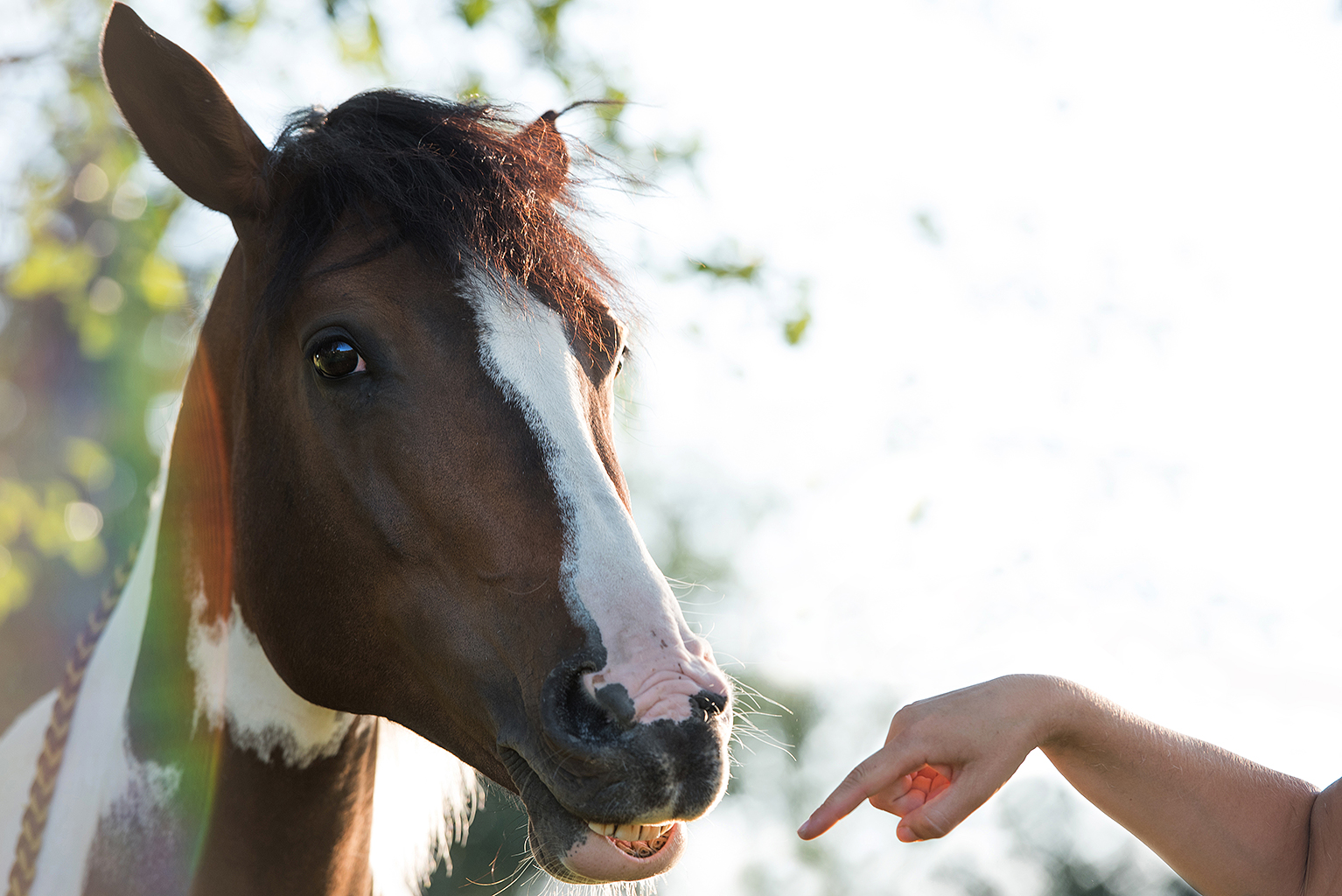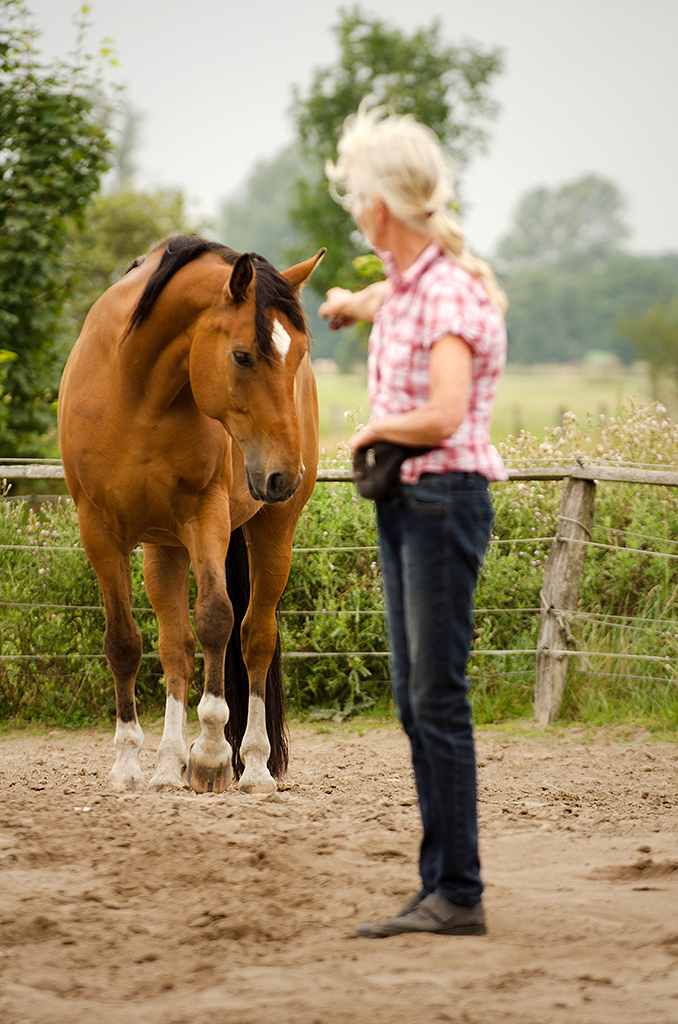Some thoughts concerning signal control
Why is it important?
Signal control is a complex topic in positive horse training. This means, we aim to make our horse understand the meaning of signals as well as the according behavioral response, but also to understand whether we request that response or not in a specific moment. Thus, working on signal control can be compared to learning vocabulary in some way. During the training process the horse learns to perform a specific behavior, movement, or action that subsequently gets associated with a specific signal, for example a term. After a while we are able to signify the behavior we request from our horse just by giving the signal alone.

And why does it work?
In principle, this works because the signal becomes a positive amplifier itself. Ultimately, the signal stands as announcement of a reward. In a similar process, we humans have internalized a variety of „words“ we tend to associate with something positive. So, the abstract signals “after-work, supper, or holiday”, for example, announce something pleasant that will happen in the future to us. What is more, we already perceive these words or vocals alone as positive; so, you could almost say that holiday has become our individual favorite word. Horses know such favorite words too because they act as signals that say: “Please perform exactly this specific behavioral response, or it is not likely that you will receive a reward”. So, the signal informs the horse about the following details:
Which behavioral response did we request?
When exactly is it requested?
Which level of intensity is requested?
Considering the requirements
Eventually, the horse will know which behavioral responses will trigger a reward, and under which conditions. We can contribute enormously by conveying the requirements as clearly and comprehensibly as possible; take small steps, establish a clear structure of the training situation, and learning that does not involve making mistakes becomes possible; of course, we can honor such a performance with an adequate rate of rewards.

Signals reduce stress
A horse that knows quite well which behavioral response we request operates within a rather clear frame that governs its movements; this reduces stress. It is not necessary to understand again and again what we, crazy human beings, request this time but is able to rely on a signal that has previously been established. As a consequence, the stress level decreases, and the opportunity to relax improves a lot. So, what is a good signal? They are clear and recognizable. Furthermore, signals work in two ways for horses: First, a very narrowly defined signal is associated with a specific behavioral response. And second, there is no chance of receiving a reward after the basic training phase if we do not give the sign.
Do we want to achieve total signal control?
Signal control is a constant process. It requires hours of training and many repetitions until a behavioral response is reliably performed after we give a specific signal (active signal control), and equally important, is not shown in the absence of the signal (passive signal control). It will probably remain a dream to achieve this level of signal control for all possible behavioral responses at the same time. Furthermore, total signal control usually does not make so much sense when it comes to our horse’s creativity, autonomy, and energy of movement. Previously established signals tell the horse to perform a specific behavioral response in a certain way over and over again almost in a stereotypical way. So, very intense signal control might not be desirable if we want our horse to be able to contribute, and to allow movements that become bigger or smaller as they develop in the moment.
Marlitt Wendt & Conny Ranz


